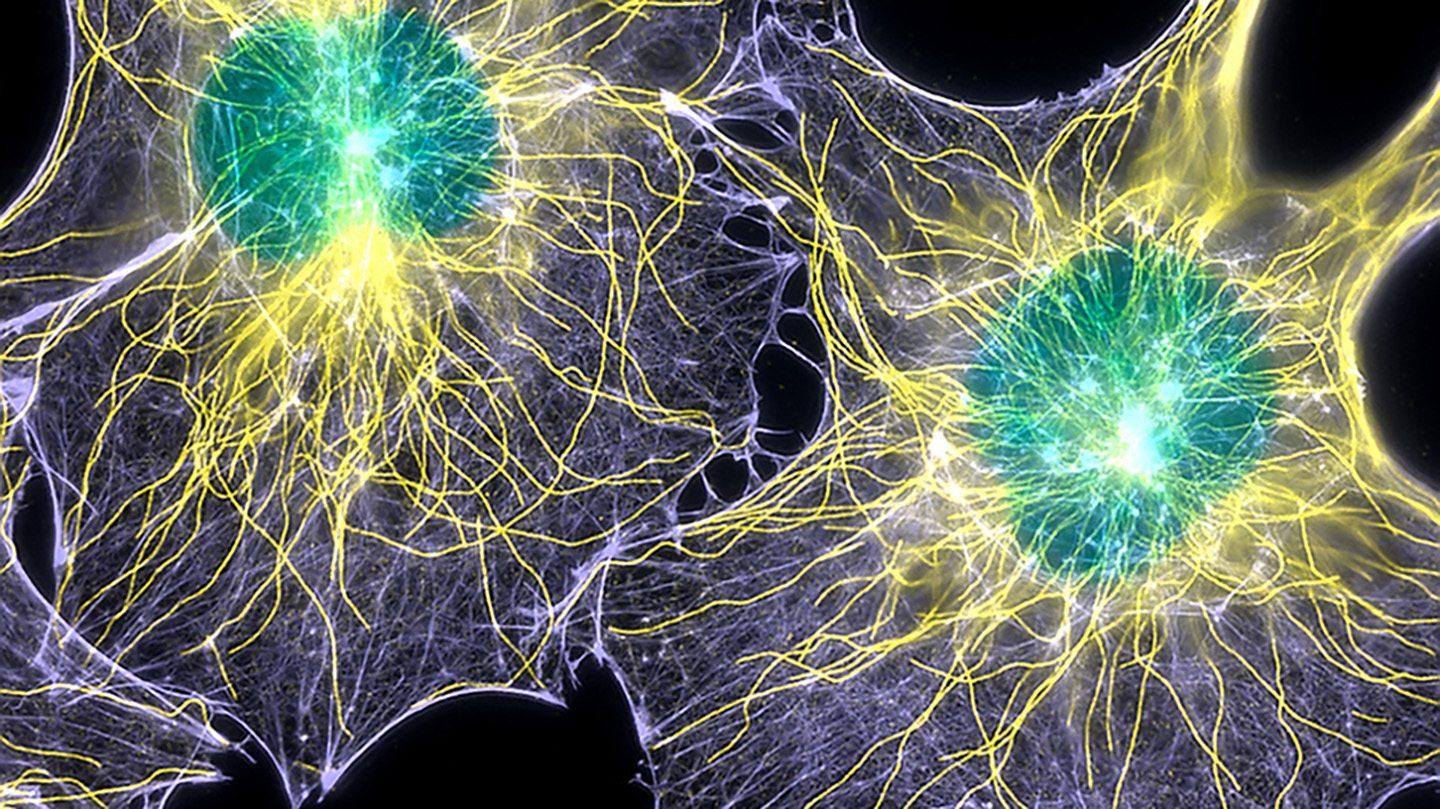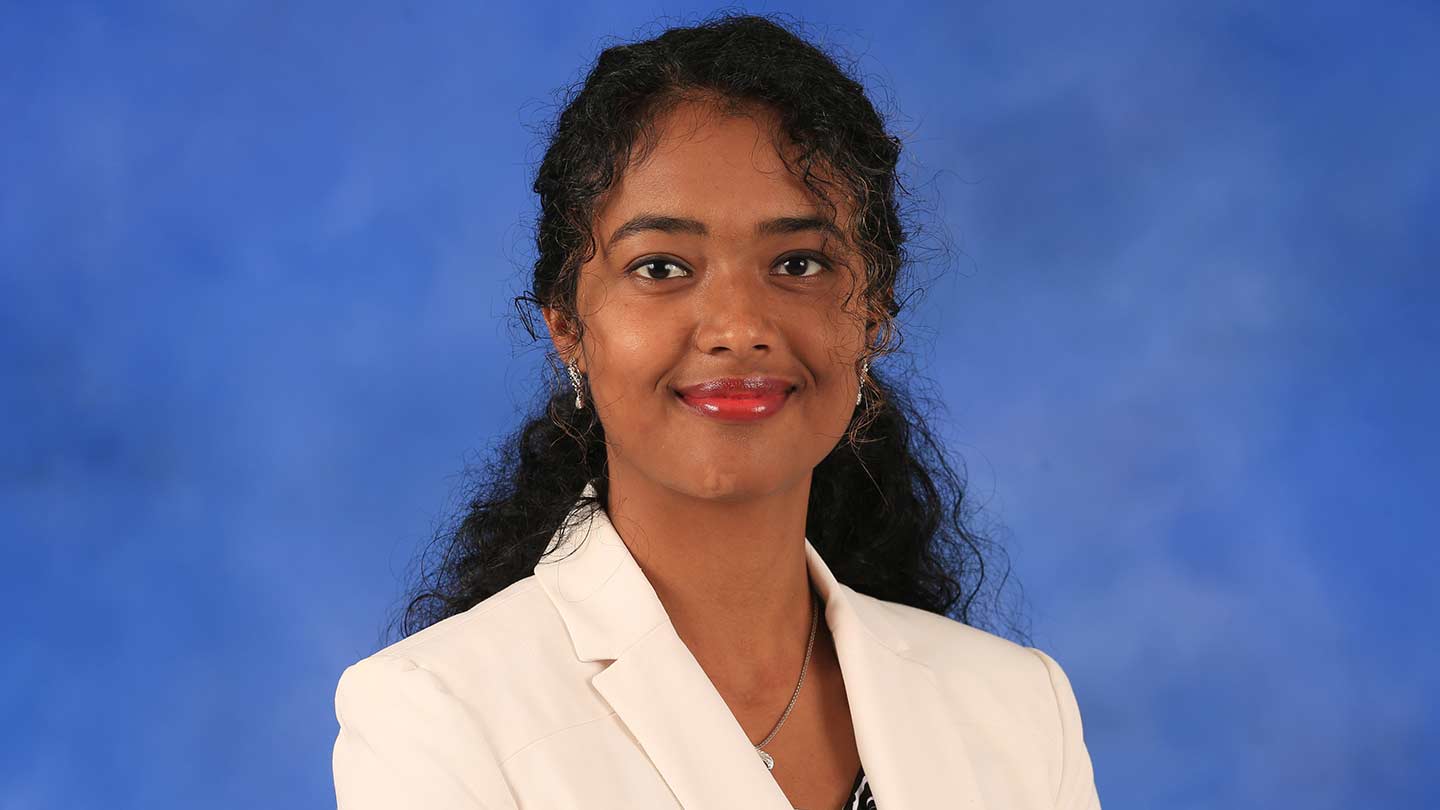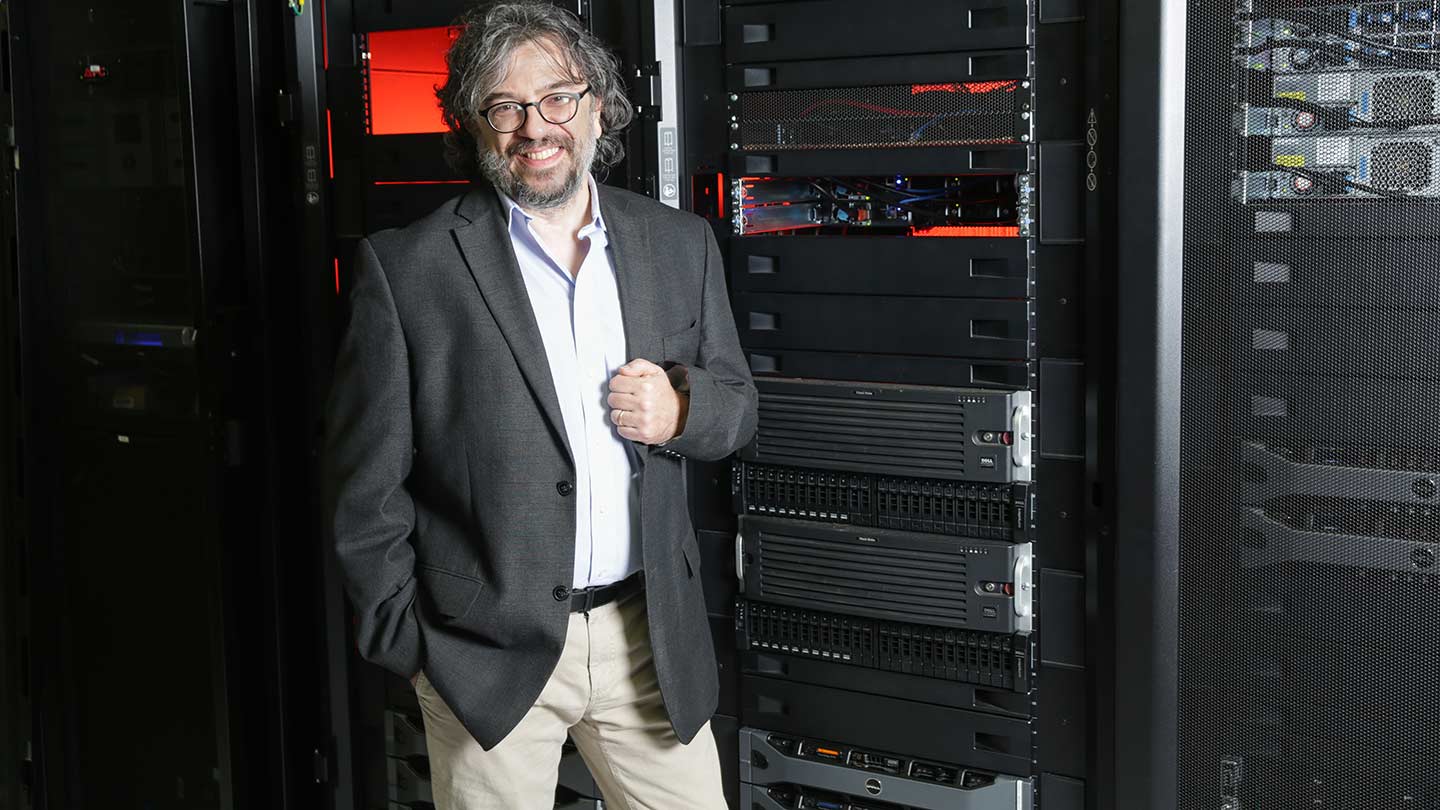
A UAH team is applying self-learning artificial intelligence and big data analytics to discover new drugs.
National Institutes of Health
A cross-college collaboration at The University of Alabama in Huntsville (UAH) has developed a self-learning artificial intelligence (AI) platform that uses big data analytics to discover how new pharmaceutical drugs and various molecules work inside living cells.
The cutting-edge research at UAH, a part of the University of Alabama System, involves Dr. Jerome Baudry, a molecular biophysicist, the Mrs. Pei-Ling Chan Chair in the Department of Biological Sciences and director of the Baudry Lab; Dr. Vineetha Menon, an assistant professor in the Department of Computer Science and the director of the Big Data Analytics Lab; computer science doctoral student Shivangi Gupta, the lead author of a paper on the research; and engineering doctoral student Armin Ahmadi, who is conducting his doctoral research in the Baudry Lab.
Supported by UAH’s Office of Technology Commercialization, the scientists are developing their research into intellectual property for industrial applications in drug discovery.
“This is a strong, integrated collaboration and we all bring our own expertise, but the main novelty in this work is in machine learning and data mining, and the lead on the overall project is Dr. Menon, who is an internationally recognized expert in these areas,” says Dr. Baudry.
Dr. Baudry’s role is to interpret the computational results in terms of biology and potential for drug discovery. Gupta is involved in AI and machine learning algorithmic developments and analyzing the results. Ahmadi is working on translating the machine learning results in drug discovery applications.
“We are moving away from solving problems analytically, like we used to do in grad schools by solving equations and deducing what is expected to happen,” says Dr. Baudry.
Instead, researchers increasingly use real-world data to find the mathematical rules that are behind the observations, he says.
“From a philosophical point of view, it is not something entirely novel; observing nature and deducting general rules from these observations has always been a part of science. But nowadays, the sheer amount and complexity of what is observed would make it impossible for a scientist to analyze the phenomena of interest, even if they were spending their life on a problem.”
Only computers have the power to do such monumental analysis, but they require complex mathematical approaches. Those are not plug-and-play approaches, but rather mathematical analysis that have to be tailored to individual problems.
“Add the inherent complexity of biological events, and you have a massive amount of vastly complex data that we are making sense of,” Dr. Baudry says.
Never-ending dance
Employing artificial intelligence and machine learning helps the researchers more efficiently understand the biological meaning of the results.
“For life to happen, molecules in the cells have to interact with each other in a never-ending dance that forms and break interactions between chemicals,” Dr Baudry says. “It is the dynamics and the nature of these interactions that we are interested in, from a biophysical point of view. What physical properties make two molecules capable of interacting with each other?”

Computer scientist Dr. Vineetha Menon, the project’s overall lead, says that contemporary research is interdisciplinary and collaborative.
Michael Mercier / UAH
Because the same principles that guide how molecules interact with each other in a living cell are also responsible for how pharmaceuticals work in the body, when researchers understand this molecular dance between chemicals, they can design new pharmaceuticals.
“They will be ‘entering the cellular dance,’ and we can develop them much cheaper and much faster than what the pharmaceutical industry is currently capable of doing,” Dr. Baudry says.
The cooperative melding of computer science and biological science is absolutely vital to speeding up findings in molecular biophysics and data science applications, especially to combat any future pandemic scenarios, Dr. Menon says.
“Contemporary research is interdisciplinary and collaborative,” she says. “You don’t really have individuals like Einstein or Curie or Pasteur anymore, who worked by themselves in their laboratories in their ivory towers, but you have highly specialized teams that need to come together to perform research and power the industrial applications of tomorrow.”
These specialized scientific teams attract funding, create knowledge and turn that knowledge into industrial applications, Dr. Menon says.
“The success of contemporary research is a direct product of how well these teams work together. As bright as the individual laboratories are, they have to become better than the sum of the parts, like an orchestra.”
The two UAH laboratories have been working together for a few years and the recent milestone reported in the research paper shows that they have co-evolved to be very efficient as a team, Dr. Menon says.
“The laboratories understand each other’s ways of thinking and we leverage each other’s’ expertise,” she says. Dr. Baudry agrees.
“This is why UAH is performing so well,” he says. “We are large enough to have a very broad array of high-tech research expertise, but we are also collaborative-minded and able to create these ad-hoc teams that can address the most modern challenging scientific and industrial questions.”
The future
Pursuing artificial intelligence as a more efficient way to answer biological questions puts the university on a direct path to the future, Dr. Baudry says.

Molecular biologist Dr. Jerome Baudry says the project aims to understand the molecular dance between chemicals in cells.
Michael Mercier / UAH
“The future is, without a doubt, moving toward artificial intelligence, machine learning, etc. You see it everywhere,” he says. “The most visible aspects of this scientific revolution are seen in self-driving cars on our roads. You can imagine all the data that cars have to acquire and analyze in order to operate safely and efficiently by themselves. Tomorrow, it could be self-piloting planes, or largely automated surgery.
“We should not fear that,” he says. “We should, on the contrary, embrace it and use this formidable power as an agent for change, as an agent for good. And anyway, we will always need drivers, airplane pilots and surgeons – technology will help us, not replace us.”
But the science must develop first in order to make it happen.
“As much as I want to be in a safe automated car or plane, what happens in life – inside our cells and our bodies – is vastly more complex that what happens on the road with automobiles,” Dr. Baudry says. “So, we need to have quite a lot of fundamental research done here, which is what we do. And fundamental research can certainly a goal in itself, but it is also a road that has many points for industrial applications, and we are also very active in that respect.”
The scientists are successful because they care a great deal about the rigor of the science, but also because it is fun and exciting, he says.
“We are really very pleased to see the younger generation of scientists, working on their PhDs or master’s in our laboratories, embracing these new directions of science,” Dr. Baudry says. “This, in the end, is what matters – the enthusiasm and skills of UAH students. And they are very bright, so the future is in safe hands.”